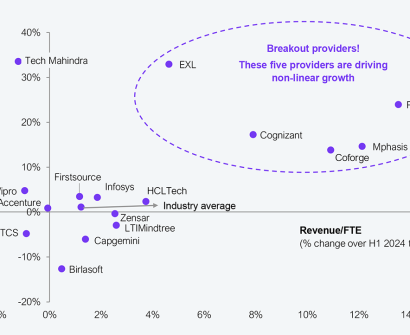Currently Empty: $0
Forecast Accuracy & Forecast Deviation – Difference and Relationship

Author Name: Manu Babbar, Vice President WFM
Forecasting Accuracy and Forecast Deviation – Expanded with Examples, Methodologies, and Formulas
1. Forecasting Accuracy
Definition: Forecasting accuracy refers to how closely the forecasted values match the actual values. High forecasting accuracy means that the predicted data aligns very well with what was observed in reality.
Examples:
- Contact Center Staffing Forecast: A contact center forecasts that it will need 100 agents to handle the expected call volume on a specific day. If exactly 100 agents were needed based on actual call volumes and handle times, this forecast has 100% accuracy.
- Sales Forecast: A company predicts it will sell 500 units of a product in a month. If the actual sales were 490 units, the forecast was very close to being accurate with only a small error.
Methodology for Measuring Forecast Accuracy: To measure the accuracy of a forecast, we can use several different metrics, the most common one being MAPE:
Mean Absolute Percentage Error (MAPE): MAPE is one of the most widely used measures of forecast accuracy. It calculates the percentage error between forecasted and actual values.
Formula:
MAPE = 1/n ∑nt |(At−Ft)/At |×100
Where:
- At is the actual value in period t,
- Ft is the forecasted value in period t,
- n is the number of time periods.
Example: If the actual sales for three months are 100, 120, and 110 units, and the forecasted values are 95, 125, and 100 units, the MAPE would be calculated as:
MAPE= 1÷3 (|100-95|÷100 + |120-125|÷120 + |110-100|÷110) * 100
MAPE = 1÷3 (0.05+0.0417+0.091) = 6.23%
Forecasting Accuracy – 100%-6.23% = 93.77%
Benefits of Accuracy Measurement:
- In supply chains, accurate forecasts help avoid overproduction and minimize waste, which is critical for both cost management and environmental sustainability.
- High forecasting accuracy builds confidence in data-driven decisions, empowering leaders to make informed choices around staffing, production, and resource management, which align with the business’s financial goals.
- With accurate forecasts, companies can better plan promotional events, seasonal peaks, or other revenue-driving initiatives. This leads to more efficient handling of customer demand during high-revenue periods, maximizing profitability.
- By predicting demand more precisely, businesses can avoid the high costs associated with both overstaffing (leading to unnecessary labor expenses) and understaffing (leading to potential overtime costs or poor customer service).
- Accurate forecasts enable businesses to meet customer demand more effectively. For example, ensuring optimal staffing levels during peak times improves response times and reduces wait times, leading to higher customer satisfaction and loyalty.
- Accurate forecasting ensures that staffing, inventory, and resources are aligned with actual demand. In contact centers, for example, this means better planning of agent schedules to handle incoming call volumes or queries without over- or under-staffing.
2. Forecast Deviation
Definition: Forecast deviation refers to the difference between forecasted and actual values. It measures the error or variance from the predicted data. Forecast deviation can be either positive or negative:
- Positive deviation: When the forecasted value is lower than the actual value.
- Negative deviation: When the forecasted value is higher than the actual value.
Examples:
- Forecast Deviation in Demand: If a company forecasts demand for 1,000 units but actual demand is 1,100, the deviation is +100 units.
- Staffing Deviation in Contact Centers: If a contact center predicts that 50 agents are required for a shift but the actual requirement was only 40 agents, the deviation would be -10 agents (over-forecasting).
Methodology for Measuring Forecast Deviation:
- Deviation (Error): Deviation is simply the difference between the actual and forecasted values.
Deviation=At−Ft
Where:
- At is the actual value,
- Ft is the forecasted value.
Example: Picking up the same example: If the actual sales for three months are 100, 120, and 110 units, and the forecasted values are 95, 125, and 100 units.
For month 1, Deviation is 100-95 = 5 unit sales +ve deviation (lower forecast than actual)
For month 2, Deviation is 120-125 = -5 unit sales -ve deviation (higher forecast than actual)
For month 3, Deviation is 110-100 = 10 unit sales +deviation (lower forecast than actual)
For 3 months combined Deviation is 330 – 320 = 10 10 unit sales +deviation (lower forecast than actual)
- Percentage Deviation: Percentage deviation measures how much the forecast was off as a percentage of the actual value.
Formula:
Percentage Deviation = (At−Ft)/At ×100
Example: If the actual value was 180 units and the forecasted value was 200 units, the percentage deviation would be:
Percentage Deviation = If the actual value was 180 units and the forecasted value was 200 units, the percentage deviation would be:
Percentage Deviation = (180−200)/180 ×100 = -11.11%
Benefits of Deviation Measurement:
- By tracking deviations, organizations can identify patterns or recurring errors in their forecasts and refine their models to enhance accuracy over time.
- Forecast deviation analysis fosters a culture of continuous improvement in forecasting processes, helping teams identify areas for model refinement and adjustment.
- Accurate deviation measurements provide critical feedback, enabling leaders to make data-driven adjustments to business strategies.
- Forecast deviations highlight mismatches between expected and actual demand, allowing businesses to optimize staffing, inventory, or budget allocation.
Summary of Key Differences:
- Forecasting Accuracy measures how well a forecast aligns with actual results, while Forecast Deviation measures the degree to which the forecast was incorrect.
- Accuracy focuses on the correctness of predictions, while Deviation focuses on the magnitude and direction of the forecast error.
Why It Matters: Both accuracy and deviation are critical to improving forecasting models. Businesses need to regularly evaluate both to optimize processes like inventory management, staffing, or sales planning.
For Reference:
Actual-to-Forecast Ratio (A/F Ratio): This ratio is commonly used to evaluate how closely actual performance aligns with forecasted values. A result close to 1 indicates a high level of forecast accuracy and low forecast deviation. A value greater than 1 (100%) signifies that actual outcome exceeded the forecast, while a value below 1 (100%) suggests the forecast overestimated the actual results. The A/F Ratio is widely recognized and often referred to as Forecast Deviation.
Source: GWFM Research & Study








